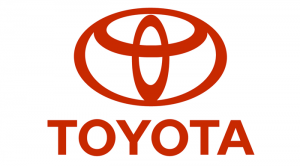Where’s the ROI?
An Opportunity
- Redos.
I‘ve worked with and continue to work with shops that have a ridiculous amount of work that has to be re-done. This problem is amplified in my larger, busier shops, but it’s prevalent everywhere, which means my business owners (and you) are losing out on a lot of money. Forget the certification! If your shop is having a tech or painter repaint something or re-work something two or three times, you’re losing profit on that job and are basically paying to have received that work. How does that make you feel? Our employees are so concerned about moving the vehicle through production because of a delivery date that they’re losing sight of their real job: fixing it correctly and completely. Don’t just fix it enough to move it to the next stage of production – this is not a proper repair. We, as a team in our shops, need to remind each other of that. If you’ve worked with me for any length of time, you’ve probably heard me suggest that you find ways for your guys and gals working “in the back” to meet the customers to create a different level of accountability. Whether that’s an hour every month where your painter sits with your CSR when customers are dropping off or picking up or having that painter walk around the car at the time of delivery with the writer or delivery specialist for 15 to 20 minutes, it will give them a much-needed shift in perspective. The people in your business who are touching the vehicles need to be reminded that there are faces and lives and families who are going to sit in this car when it leaves your lot. Let that be one of the main reasons to do what they do – properly and correctly – so there is accountability beyond pay. As the manager or owner of a shop, you also need to be tracking redos. How do you know that a vehicle got moved to paint prep and someone pushed it back to the tech to redo it? How do you know that a car was ready to leave but, when your QC rep looked at it, he pushed it back to paint? You can’t see those metrics unless you’ve set up ways to track them. Some of my small shops simply track things on paper, while others open warranty tickets rather than keeping an RO open or re-opening the closed one. Some others are using the feedback from CSI reports. If you’re using CCC in your shop, Mark Fincher, vice president of Market Solutions with CCC, said, “Repairers can use both the warranty reports combined with their CSI data and trends to identify opportunities at the technician or estimator level.” CCC offers a report called an Internal Job Cost Report under the warranty section that you can look at. A new program they rolled out last year is CCC Checklist Reports, where repairers can see the number of times a process failed by setting up an electronic checklist for each repair. No matter what method you choose, you need to be tracking these things so you can realize the enormity of the issue and create that strong foundation we talked about earlier. - Friendliness, helpfulness and knowledge.
I know you’ve worked with people who are friendly but can’t get a single thing done properly. I have! Then, there are people who know everything under the sun about whatever the subject but dealing with their personality feels like brushing your teeth with a strip of sandpaper. Let’s train your staff to not only be friendly but also knowledgeable. If they don’t know something, that’s okay. Let’s train them how to be professional and get the information they need to then pass it along efficiently to the customer (helpfulness). For example, I called my client’s shop the other day as a mock customer and, instead of the CSR putting me on hold, she said “um” over and over and shuffled papers around and clicked keys on the keyboard. Needless to say, I will be working with the CSRs on proper phone etiquette, including putting someone on hold until they’re prepared and then resuming the conversation. Let’s encourage our writers who can write the heck out of a sheet to take a deep breath and smile when going over the vehicle of a customer who just got rear-ended while minding their own business at a red light. That way, the customer won’t feel “processed” and unimportant. Our writers are typically more analytical, which makes them good at what they do, but a little shift in perspective to soften them up will pay great dividends. The combination of these things will be very meaningful to your customers! You may fix that person’s vehicle in record time with no flaws, but if that customer hasn’t made the connection to the staff in the “front” of your shop, there will be no loyalty. Jeffrey Gitomer, an author, professional speaker and business trainer who writes and lectures internationally on sales, customer loyalty and personal development, said it perfectly: “Loyalty is earned with friendliness, responsiveness, ease of doing business, fair value and the good feeling customers get when they call you, visit you or interact with you.” - Capture ratio.
You’re getting vehicles to your door and writing estimates, but how well are your writers closing that job? What is your conversion rate? Can it be better? If you aren’t capturing more than 70 to 75% of those jobs, then this is low-hanging fruit for you. The customer is clearly interested in having their vehicle repaired. How easy are your writers making it for your customer to drop? Are your writers just order takers or are they pushing to “make the sale.” We can easily give our writers and CSRs some easy word tracks to help them close the deal. For example: Instead of making an appointment for an estimate, if you’re a DRP for your customer’s insurer, change the phrasing for them to make an appointment to “drop off the vehicle.” They clearly don’t need an estimate in this case. Example: A customer calls to make an appointment for an estimate. “Thank you for calling, Mrs. Smith. Which insurance company are you working with? That’s perfect. We are a direct repair facility for XYZ insurance, meaning we have a partnership with XYZ, so all you need to do is schedule a time that is convenient for you to drop off your vehicle and we will handle the rest. Would today or tomorrow work best for you?” After an estimate is given to a customer, your estimator can say, “I can call Enterprise right now for you, Mrs. Smith, and have them pick you up so you can get on with your day. That way you don’t have to waste time coming back another day.” Something like this is much better than Mrs. Smith thanking the writer for the estimate and then coming back later or, more than likely, going somewhere else to shop that estimate.
Summary
Once you’ve taken a magnifying glass to your own business, you can create a strong and efficient shop that blows other shops’ quality, cycle time and service out of the water.
I always recommend you start with the basics. If you’re building a strong foundation in your shop, the proper additions will maximize your shop’s growth exponentially whether it be OE certification, marketing or sales strategies. Until then, they’re all just loose feathers in your cap that look good and feel good but are meaningless when it really counts.
Micki Woods is a marketing and business development specialist for the automotive industry. She used to own her own body shop and was on the management team of one of the largest auto body shops in Los Angeles County. She now speaks, teaches and emcees events across the country. Visit Micki’s website at mickiwoodsmarketing.com or email her at [email protected].














